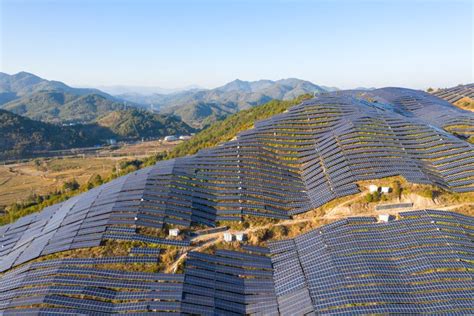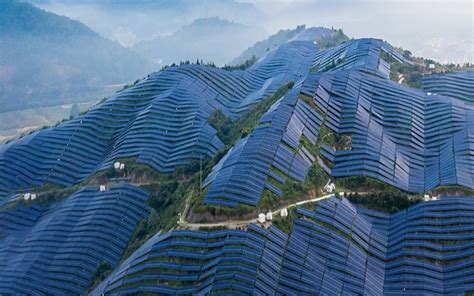In recent years, solar energy has rapidly emerged as a key player in the global shift towards renewable power sources. Recent advancements in solar technology have significantly enhanced the efficiency and accessibility of solar energy, making it a more viable solution for sustainable energy production. High-efficiency solar panels, innovative energy storage systems, and the integration of AI and IoT technologies are transforming how solar power is harnessed and managed. Additionally, the expansion of large-scale solar farms and the decreasing cost of installations are driving the widespread adoption of solar energy, contributing to a greener and more sustainable future for all.
Investigate this topic thoroughly with gameslino.com
1. Introduction of high-efficiency solar panels with improved energy conversion rates.
Recent advancements in solar panel technology have ushered in a new era of high-efficiency solar panels, significantly improving energy conversion rates. Traditionally, solar panels converted only a fraction of sunlight into usable electricity, with efficiency rates hovering around 15-20%. However, breakthroughs in photovoltaic (PV) cell technology have pushed these numbers higher, with some panels now achieving efficiency rates exceeding 25%.
These high-efficiency panels are designed using advanced materials and innovative manufacturing techniques. For instance, the use of multi-junction cells, which layer different semiconductor materials, allows panels to capture a broader spectrum of sunlight, thereby converting more solar energy into electricity. Another promising development is the use of perovskite solar cells, which have shown great potential in increasing energy conversion rates while being cost-effective to produce.
These advancements not only improve the overall output of solar installations but also reduce the amount of space required for solar farms, making solar energy a more practical option for both urban and rural areas. As the technology continues to evolve, high-efficiency solar panels are expected to play a crucial role in the global push for renewable energy, providing cleaner, more sustainable power to meet the world’s growing energy demands.

2. Development of innovative solar storage solutions for better energy management.
As solar energy generation becomes more efficient, the development of innovative storage solutions has become crucial for better energy management. Traditional energy storage methods, such as lead-acid batteries, have limitations in terms of capacity, efficiency, and longevity. However, recent advancements have led to the creation of more sophisticated storage systems that can store larger amounts of energy and release it as needed, ensuring a steady supply of power even when sunlight is not available.
One of the most significant innovations in this area is the development of lithium-ion batteries, which offer higher energy density, longer life cycles, and faster charging times compared to older technologies. Additionally, flow batteries, which store energy in liquid electrolytes, are emerging as a promising solution for large-scale solar energy storage, providing greater flexibility and scalability.
Another breakthrough is the integration of smart energy management systems that use artificial intelligence to optimize energy storage and distribution, balancing supply and demand more effectively. These advancements in solar storage technology are essential for maximizing the potential of solar energy, allowing for more consistent and reliable renewable power generation, and playing a pivotal role in the transition to a sustainable energy future.

3. Implementation of AI and IoT technologies in solar energy systems for enhanced performance.
The integration of AI and IoT technologies into solar energy systems is revolutionizing how solar power is generated, managed, and utilized. By leveraging the power of artificial intelligence, solar energy systems can now analyze vast amounts of data in real-time, optimizing energy production and efficiency. AI algorithms can predict energy output based on weather patterns, adjust the angle of solar panels for maximum sunlight capture, and manage energy distribution to meet demand more effectively.
Meanwhile, IoT technology enables interconnected solar devices to communicate seamlessly, creating smart grids that monitor and control energy flow. This connectivity allows for remote monitoring and management, ensuring that solar systems operate at peak efficiency. IoT sensors can detect performance issues, trigger maintenance alerts, and even automate repairs, reducing downtime and maintenance costs.
These technologies enhance the overall performance of solar energy systems, making them more responsive, reliable, and efficient. As AI and IoT continue to evolve, their role in solar energy will become increasingly vital, driving further advancements in renewable energy.

4. Expansion of large-scale solar farms contributing to increased renewable energy production.
The expansion of large-scale solar farms is a key driver in the global increase in renewable energy production. As solar technology becomes more efficient and cost-effective, governments and private entities are investing in massive solar installations that can generate significant amounts of clean energy. These solar farms, often spanning hundreds or even thousands of acres, harness the power of the sun to supply electricity to vast areas, supporting both residential and industrial needs.
Large-scale solar farms are strategically located in regions with abundant sunlight, maximizing their energy output. Advances in solar panel technology, combined with innovative storage solutions, allow these farms to operate more efficiently, providing a steady and reliable source of renewable energy. Additionally, the economies of scale achieved in these large projects help reduce the overall cost of solar energy, making it more competitive with traditional fossil fuels. The continued expansion of solar farms is crucial for meeting global energy demands while reducing carbon emissions and promoting environmental sustainability.
5. Significant reduction in the cost of solar energy installations making it more accessible.
The significant reduction in the cost of solar energy installations has made this renewable energy source more accessible than ever before. Over the past decade, the cost of solar panels and related equipment has decreased dramatically, driven by advancements in manufacturing, economies of scale, and increased competition within the industry. This cost reduction has lowered the barrier to entry for both residential and commercial solar installations, enabling more individuals and businesses to adopt solar energy.
In addition to the drop in hardware costs, the availability of government incentives, tax credits, and financing options has further enhanced affordability. As a result, more homeowners and companies are investing in solar energy, recognizing its long-term financial benefits and environmental advantages. The decrease in installation costs has also spurred growth in community solar projects, where multiple participants share the benefits of a single solar installation. Overall, the reduced cost of solar energy installations is playing a pivotal role in accelerating the transition to a sustainable, renewable energy future.
The latest advancements in solar energy technology are revolutionizing the renewable energy landscape. With improved efficiency, innovative storage, AI integration, large-scale solar farms, and reduced installation costs, solar energy is becoming more accessible and reliable. These developments are crucial for driving global adoption and paving the way toward a sustainable, clean energy future.
gameslino.com

